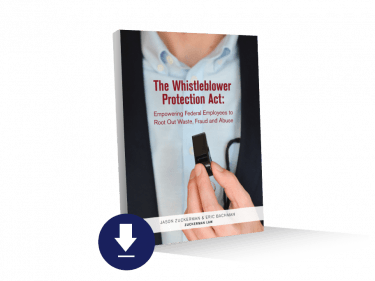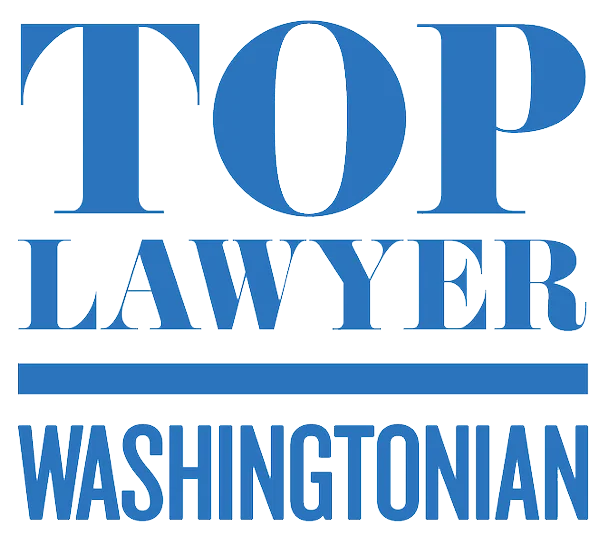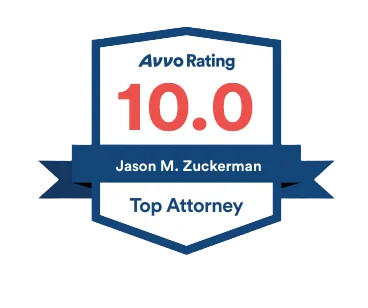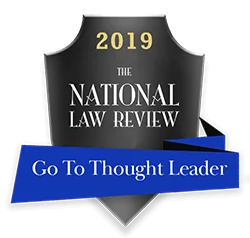Proving an Affirmative Defense of Discrimination in an MSPB Appeal
The Board’s September 3, 2015 decision in Savage v. Department of the Army clarifies the burden that an appellant must meet to prevail on an affirmative defense of discrimination in an adverse action appeal. While the Board held that an appellant need not meet the Nassar “but for” causation standard to prove a violation of 42 U.S.C. § 2000e-16 (and instead can prevail by showing that discrimination was a motivating factor), the appellant ultimately must show that the prohibited personnel practice was the “but for” cause of the action, i.e., the agency would not have taken the same action in the absence of the discriminatory or retaliatory motive.
Applying the Mt. Healthy burden-shifting framework, the Board articulates the appellant’s burden as follows:
In sum, when an appellant asserts an affirmative defense of discrimination or retaliation under 42 U.S.C. § 2000e-16, the Board first will inquire whether the appellant has shown by preponderant evidence that the prohibited consideration was a motivating factor in the contested personnel action. Such a showing is sufficient to establish that the agency violated 42 U.S.C. § 2000e-16, thereby committing a prohibited personnel practice under 5 U.S.C. § 2302(b)(1). In making her initial showing, an appellant may rely on direct evidence or any of the three types of circumstantial evidence described in Troupe, either alone or in combination. If the appellant meets her burden, we then will inquire whether the agency has shown by preponderant evidence that the action was not based on the prohibited personnel practice, i.e., that it still would have taken the contested action in the absence of the discriminatory or retaliatory motive. If we find that the agency has made that showing, its violation of 42 U.S.C. § 2000e-16 will not require reversal of the action.
The final step in this burden-shifting framework is favorable to agencies because it is a lower burden than the rigorous “clear and convincing evidence” standard that agencies must meet to prevail in whistleblower retaliation cases.
Discriminatory Intent Can be Proven Through Direct Evidence, Convincing Mosaic Evidence, Comparator Evidence, or Pretext Evidence
The Board also clarified that to establish an EEO reprisal claim using circumstantial evidence, the appellant need not provide evidence showing a “convincing mosaic” of retaliation against her. Instead, direct evidence, convincing mosaic evidence, comparator evidence or pretext evidence is sufficient by itself to support a judgment for the appellant. The Board summarized these types of evidence as follows:
One kind is direct evidence, i.e., “evidence that can be interpreted as an acknowledgment of discriminatory intent[.]” Id. In addition to direct evidence, the court identified and distinguished three types of circumstantial evidence. The first kind “consists of suspicious timing, ambiguous statements oral or written, behavior toward or comments directed at other employees in the protected group, and other bits and pieces from which an inference of discriminatory intent might be drawn.” Id. Considered together, the court explained, such bits and pieces may compose “a convincing mosaic of discrimination.” Id. at 737. The second kind of circumstantial evidence is comparator evidence, consisting of “evidence, whether or not rigorously statistical, that employees similarly situated to the plaintiff other than in the characteristic . . . on which an employer is forbidden to base a difference in treatment received systematically better treatment.” Id. at 736. The third kind consists of evidence that the agency’s stated reason for its action is “unworthy of belief, a mere pretext for discrimination.” Id. The court stressed that none of the aforementioned types of evidence, i.e., direct, “convincing mosaic,” comparator, or pretext, will be needed in every case. “Each type of evidence,” the court explained, “is sufficient by itself . . . to support a judgment for [the employee]; or they can be used together.” Id.
Hostile Work Environment is a Personnel Action Under the Whistleblower Protection Act
 The Whistleblower Protection Act (WPA) prohibits a broad range of retaliatory personnel actions, including “any other significant change in duties, responsibilities, or working conditions.” 5 U.S.C. § 2302(a)(2)(A)(xii). But there are few cases addressing whether a hostile work environment is actionable under the WPA. In Savage, the Board held that a hostile work environment is a “personnel action” under the WPA, relying in part on the legislative history of the 1994 amendments to the WPA, which indicates that the term “any other significant change in duties, responsibilities, or working conditions” should be interpreted broadly, to include “any harassment or discrimination that could have a chilling effect on whistleblowing or otherwise undermine the merit system.” This decision is consistent with a trend in whistleblower cases to broadly construe adverse actions or personnel actions to include any action that might have dissuaded a reasonable worker from engaging in protected conduct. For example, the Fifth Circuit recently held that merely “outing” a whistleblower is an adverse action under the whistleblower protection provision of the Sarbanes-Oxley Act.
The Whistleblower Protection Act (WPA) prohibits a broad range of retaliatory personnel actions, including “any other significant change in duties, responsibilities, or working conditions.” 5 U.S.C. § 2302(a)(2)(A)(xii). But there are few cases addressing whether a hostile work environment is actionable under the WPA. In Savage, the Board held that a hostile work environment is a “personnel action” under the WPA, relying in part on the legislative history of the 1994 amendments to the WPA, which indicates that the term “any other significant change in duties, responsibilities, or working conditions” should be interpreted broadly, to include “any harassment or discrimination that could have a chilling effect on whistleblowing or otherwise undermine the merit system.” This decision is consistent with a trend in whistleblower cases to broadly construe adverse actions or personnel actions to include any action that might have dissuaded a reasonable worker from engaging in protected conduct. For example, the Fifth Circuit recently held that merely “outing” a whistleblower is an adverse action under the whistleblower protection provision of the Sarbanes-Oxley Act.
Guide to Whistleblower Protection Act
Whistleblower attorneys Eric Bachman and Jason Zuckerman, former senior officials at the U.S. Office of Special Counsel, have released a guide for federal employee whistleblowers titled The Whistleblower Protection Act: Empowering Federal Employees to Root Out Waste, Fraud and Abuse and is available for download by clicking here. The goal of the guide is to inform federal employees about the whistleblower rights and protections available under the Whistleblower Protection Act, as amended by the Whistleblower Protection Enhancement Act and the Follow the Rules Act.
The goal of the guide is to inform federal employees about the whistleblower rights and protections available under the Whistleblower Protection Act, as amended by the Whistleblower Protection Enhancement Act and the Follow the Rules Act.
This guide provides an overview of the WPA and offers practical tips for navigating some of the challenging issues that often arise in whistleblower cases. Topics covered include:
- What Disclosures are Protected Under the Whistleblower Protection Act?
- Does the Whistleblower Protection Act Protect Employees Who Exercise an Appeal or Grievance Right?
- Prohibited Forms of Whistleblower Retaliation
- Proving Knowledge of Protected Whistleblowing
- Proving Causation
- What is an Agency’s Burden to Avoid Liability Once the Whistleblower Has Proved Causation?
- Seeking Relief from Retaliation
- Election of Remedies
- Can OSC Seek a Stay of a Personnel Action?
- Damages or Remedies for Retaliation
- Gag Orders and Non-Disclosure Agreements
Co-authors Eric Bachman and Jason Zuckerman have represented employees in Whistleblower Protection Act claims and served in senior leadership positions at the U.S. Office of Special Counsel, the federal agency that enforces the Whistleblower Protection Act.
Experienced Washington DC Federal Employment Lawyers
 Zuckerman Law has represented whistleblowers before the Office of Special Counsel, Offices of Inspectors General, and Congressional oversight committees. The firm is uniquely qualified to represent whistleblowers in the federal government because two of the firm’s attorneys served in senior roles at the U.S. Office of Special Counsel.
Zuckerman Law has represented whistleblowers before the Office of Special Counsel, Offices of Inspectors General, and Congressional oversight committees. The firm is uniquely qualified to represent whistleblowers in the federal government because two of the firm’s attorneys served in senior roles at the U.S. Office of Special Counsel.
- Eric Bachman served as Deputy Special Counsel, Litigation and Legal Affairs, OSC, where he spearheaded an initiative to combat whistleblower retaliation at the Department of Veterans Affairs. During Bachman’s tenure at OSC, the number of favorable actions for whistleblowers increased by over 50% agency-wide.
- Jason Zuckerman served as Senior Legal Advisor to the Special Counsel at OSC, where he worked on implementation of the Whistleblower Protection Enhancement Act and several high-profile investigations.
The firm has represented whistleblowers testifying before the House Financial Services Committee and vigorously opposed efforts to silence whistleblowers. The whistleblower protection lawyers at Zuckerman Law have also helped federal employees combat unlawful gag provisions in agency policies or agreements.
If you are seeking representation in a whistleblower protection case, click here, or call us at 202-262-8959 to schedule a free preliminary consultation.








